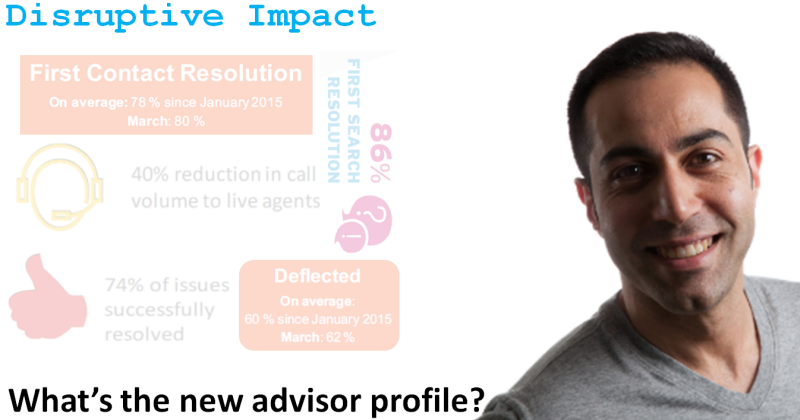
The next big thing has arrived in the form of conversational commerce. Think Alexa, Amelia or Edward. Even Tacobot if you need a snack fast.
Intelligent assistance is the first wave of a very different looking future. If you are trialling bots right now you are up to speed. If you did not know that most of your day to day customer service volumes will be managed through intelligent assistance, then you need to quicken your pace and figure out what that means.
Implications?
How many headcount, what sized estate will remain? What’s left of a thirty year industry after everyone has followed everyone else and discovered people are no longer required for the majority of service interactions? Whatever remains that is complex, emotional or about relationship building stays with people. The rest migrates.
How big is that? I’m betting it’s minimum 40%, maximum 90% once every use case has been road tested.
If you already believe in the size of that prize, then I wonder how many team leaders and software licences you are actually going to need next year? Best have an informed view on that before an over zealous CFO with Brexit blues comes and tells you what they think it means.
This is of course a shock. Life’s busy enough with all the dextrous plate spinning entailed in running customer service when it’s primarily resourced through live assistance.
Just check out the most popular topics on callcentrehelper.com. Possibly the most visited contact centre site on the planet. The obsession is around workforce management and trying to get more from less. With the added complication of having to now doing it under the guise of an empowered culture.
Fact is, running teams, even lean ones, is expensive. We kid ourselves trying to make it cheaper. But a 300 seat centre costs. A lot. That why 600 + seat centres went offshore. And the trouble with that is too well known to even repeat.
I know a decade ago some of the big chiefs in UK customer service were promising 50% reduction in live interactions to their boards. Didn’t happen. The tech was too raw, UX was not the ‘be all’ it is now and customers were still getting smartphone fever.
Now it’s 2016. We are in a world in which desktop is becoming smartphone and operating system is becoming a messaging platform. Facebook, Microsoft, Amazon, Google and Apple are embarked on their next titanic struggle for supremacy. It’s digital ecosystems all round. Winner takes all. The usual stuff.
Self service, when it’s spiced up with natural language processing, speech recognition and deep learning, heralds the introduction of the new age of cognitive computing. A time when even dumb things get smarter. Don’t snigger. I know we can all think of exceptions to that claim!
A true tsunami is on its way. No mistaking the timing either. Lord knows what the combined marketing spend is of the previous mentioned group, but the effect is you are about to start wanting stuff you never knew you needed. Naturally that extends to your customers and your employees. It’s a whole new set of customer behaviours we will then have to understand and satisfy.
For instance, 30% of US consumers have now tried voice self service to get stuff done. And I don’t mean IVR. The majority of that happened in just the last six months. Amazon’s Echo has fired imaginations. Google and Microsoft have seen similar adoption levels with voice activated search. Messenger based bots weren’t even out there until March this year. It is unfolding that fast.
So What’s Your Point?
My reason for writing this is not really to go oh and ah about the tech. My aim is to try and reach into the hermetically sealed bubble that is the contact centre universe and ring the bell for break time. It’s time to stop, have a look around and notice what’s a-coming.
Everyone has been on the same science lab experiment for the last twenty years. It’s time to change the chemistry if we want an improved outcome.
Here’s a 74 second animation that says all this much better.
Alternatively you can come to my next briefing and bring your boss. There’s a full description here with agenda, dates, cost and feedback from previous participants.
Either way, if you get this, nudge the person next to you. It’s time the industry caught up with the outside world.




